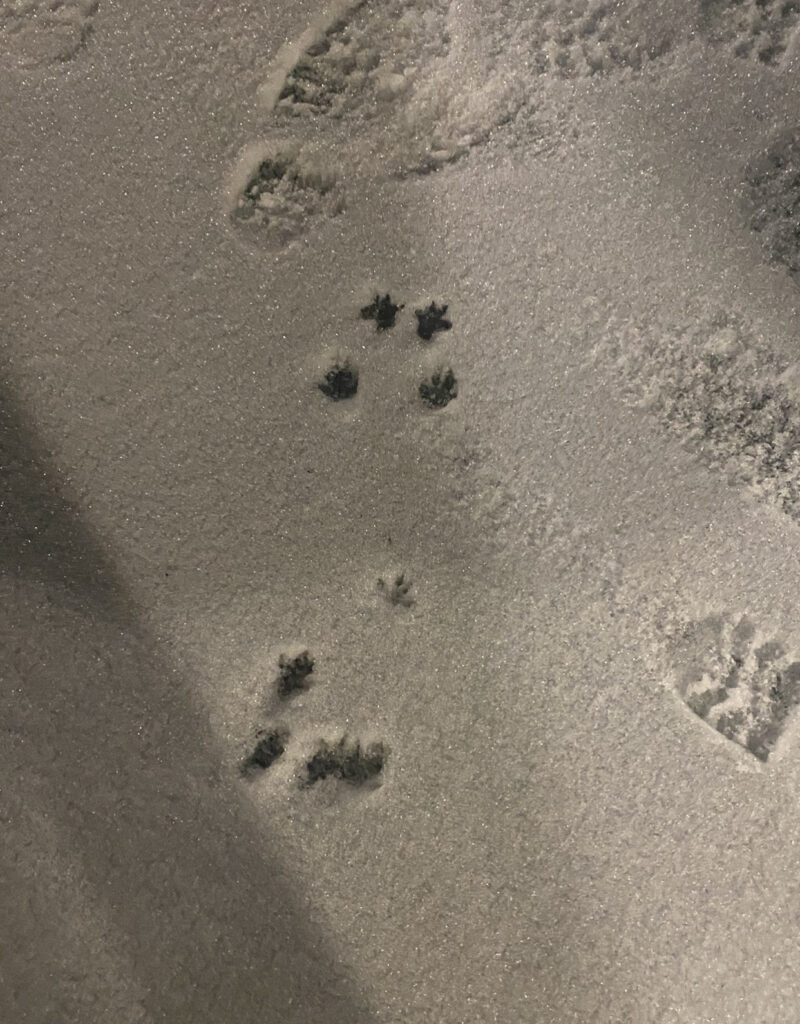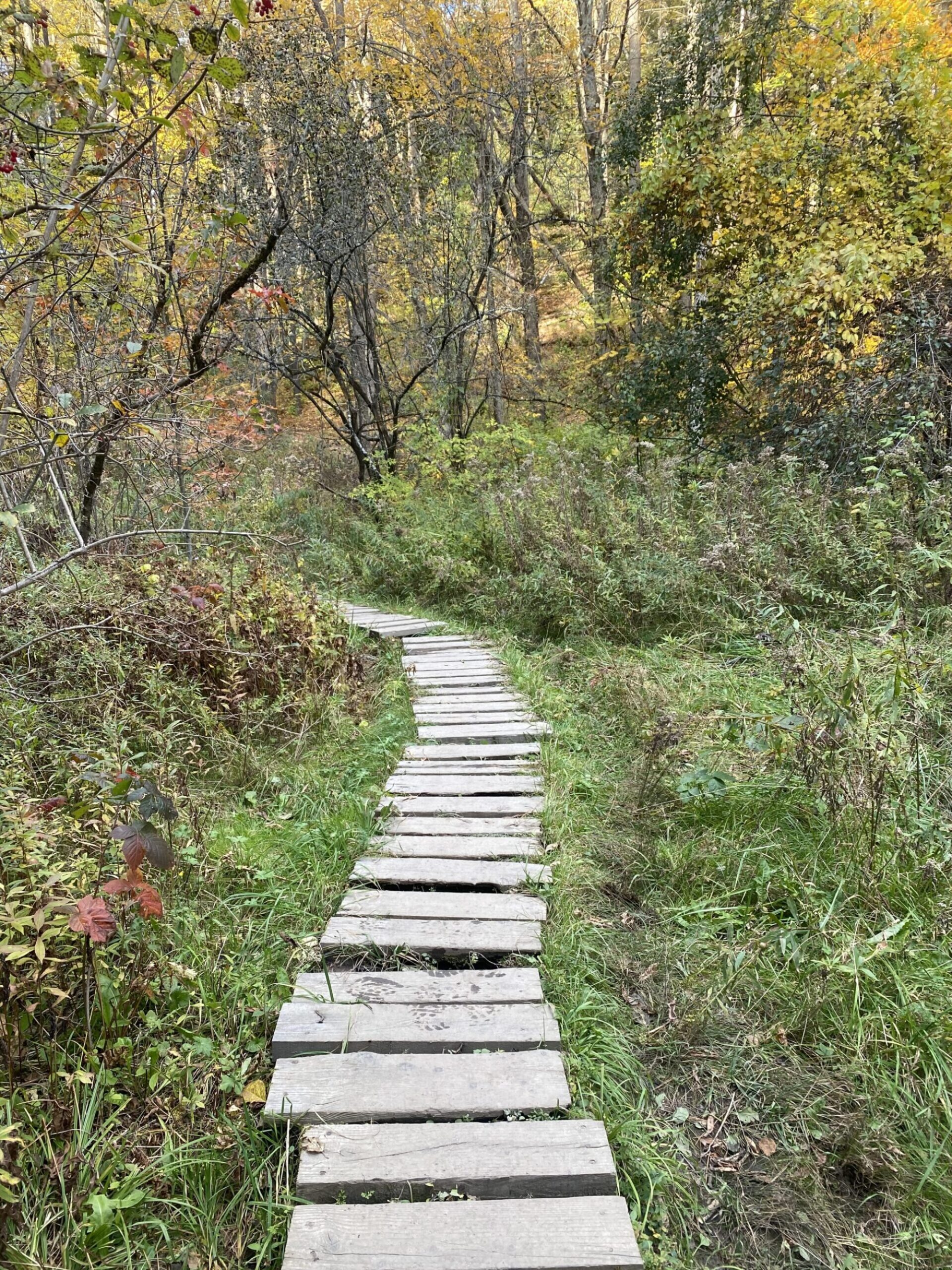This week proved to be difficult for spotting signs of wildlife with the continuous melting of the snow with the increasing temperatures. However the ever present sounds of the Black-capped chickadees, Tufted titmouse, and American robin emerging with the coming warmth. Despite not being able to record some of these calls, I had been able to identify them based on my common knowledge of the birds of the North East.
In my explorations I had gone into Centennial woods but I was not able to get any clear tracks. These picture below were ones simply spotted around campus, as is apparent with the surrounding human tracks. The sign I was able to record was some more tracks –pretty clear ones if I may add– of a common local species. The identification process of these tracks was not too difficult considering the clarity of them, they seemed pretty recent and well preserved in the icy ground. Looking at these tracks I was able to notice their small size which limited the selection down greatly. Then I was able to notice the sharp nails and the amount of toes. From all of these observations, I was able to determine this species as the Eastern Grey Squirrel.

The process of using iNaturalist was not one foreign to me considering I have used the program in the past. But it was pretty easy to navigate and add to the class page. Through scrolling around the page it was easy to discover that may others have recording this animal as well.
